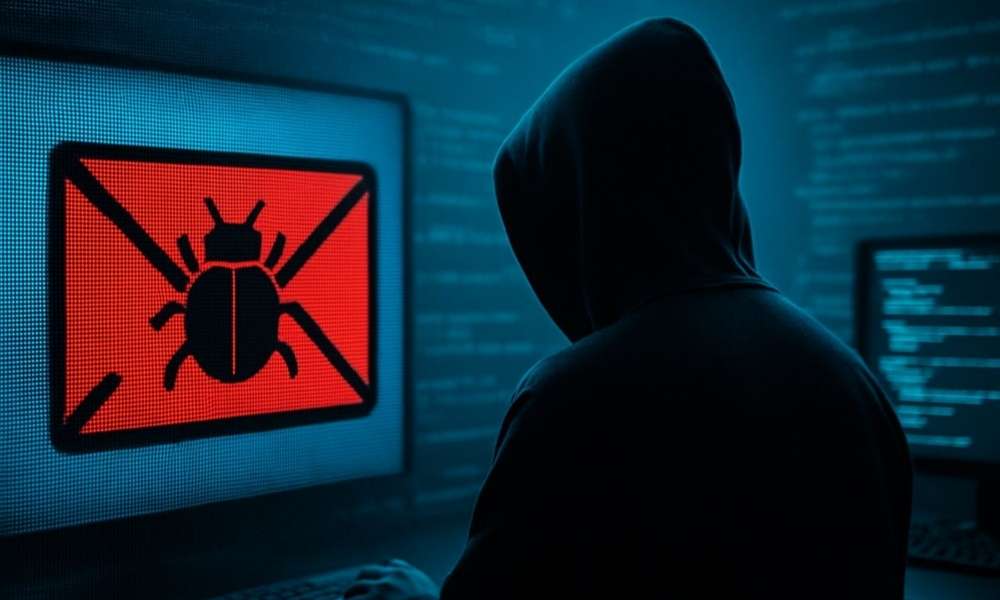Internet
What Is the First Computer Virus in the Philippines? The Story of the ILOVEYOU Worm
What Is the First Computer Virus in the Philippines?
The first computer virus to originate from the Philippines is the infamous ILOVEYOU virus, also referred to as the Love Bug or the Loveletter worm. It was launched on May 4, 2000, and quickly spread across the globe, becoming one of the most destructive and wide-reaching email worms in history.
The ILOVEYOU virus infected tens of millions of computers in just a few days, bringing global attention to the rise of cybercrime and exposing major weaknesses in computer security systems at the time. More importantly, it introduced the world to the threat of social engineering attacks, where hackers exploit human behavior rather than system flaws.
Crafted in Manila, this malware wasn’t just the first computer virus from the Philippines—it was one of the first digital threats to expose how unprepared the internet was for such a rapid and human-targeted attack.
Origins of the ILOVEYOU Virus
Who Was Behind the Virus?
The mastermind of the ILOVEYOU virus was Onel de Guzman, a 24-year-old college student studying computer science at AMA Computer College, located in Quezon City, Philippines. De Guzman had a strong understanding of programming languages, especially VBScript, which was commonly used in Windows-based systems during the early 2000s.
Interestingly, the ILOVEYOU worm was based on a thesis project that was rejected by his school. His idea was to develop a program that could steal login credentials, primarily to access the internet for free. At that time, dial-up internet was expensive, and many students in the Philippines couldn’t afford regular access. De Guzman believed that internet connectivity should be free for all, especially in developing countries.
Development and Motivation
De Guzman used VBScript to write the virus. It was designed to exploit vulnerabilities in Microsoft Outlook and Windows’ handling of script files. The main goal of the program was to trick users into opening the file through emotional manipulation—a classic example of a social engineering tactic.
Though De Guzman later admitted to creating the virus, he claimed that his intentions were never to cause large-scale destruction. Nonetheless, his creation spiraled beyond control, demonstrating how a single malicious script could impact the entire world.
How the ILOVEYOU Virus Spread
The Power of Curiosity
The ILOVEYOU virus spread using email, the most popular form of digital communication at the time. The email arrived with the subject line:
“ILOVEYOU”
It contained an attachment that appeared to be a simple text file:
“LOVE-LETTER-FOR-YOU.TXT.vbs”
At first glance, users saw a love letter. But the .vbs extension revealed that the file was not a harmless document, but rather a Visual Basic Script. Many users had their Windows settings configured to hide known file extensions, so they only saw “LOVE-LETTER-FOR-YOU.TXT”, which made it more convincing.
What Happened When the File Was Opened?
Upon execution, the virus:
- Overwrote system files and personal documents, particularly targeting .jpg, .jpeg, .mp3, .vbs, and .js files.
- Copied itself to Windows system folders, ensuring persistence.
- Sent a copy of itself to every contact in the victim’s Microsoft Outlook address book.
- Attempted to download a Trojan password stealer from a hosted website, enabling identity theft and unauthorized access.
Because it used a sender’s address book, victims unknowingly forwarded the virus to friends, coworkers, and family. It was a brilliant example of how trust in digital communication can be manipulated—essentially weaponizing human relationships.
Global Impact of the ILOVEYOU Virus
Widespread Infection
Within hours of its release, the ILOVEYOU worm became a global phenomenon, infecting:
- Government offices
- Media networks
- Financial institutions
- Universities and small businesses
Notable organizations like the Pentagon, CIA, British Parliament, and Microsoft were forced to shut down email servers to halt the infection.
By the end of the first week, the worm had compromised more than 50 million computers in over 20 countries, with some estimates going as high as 10% of the world’s internet-connected computers at the time.
Economic and Operational Damage
The financial consequences were staggering:
- Direct damages: Estimated at $5.5 billion to $8.7 billion
- Global cleanup and recovery costs: Topped $15 billion
Companies lost sensitive data, faced operational downtime, and incurred massive expenses for data recovery, software updates, and security overhauls. The attack exposed how ill-equipped many organizations were to respond to malware threats.
Legal and Legislative Aftermath in the Philippines
Why Was No One Arrested?
Despite global calls for justice, Onel de Guzman was never convicted. At the time, the Philippines had no laws criminalizing the creation or distribution of malicious software. There were no legal provisions covering email worms, hacking, or unauthorized access to computer networks.
This legal loophole frustrated international law enforcement agencies, many of whom were helpless as the creator of the world’s most devastating worm remained free.
The Birth of Philippine Cyber Law
As a direct result of the ILOVEYOU outbreak, the Philippine government moved quickly to address the legislative gap. In July 2000, just two months after the attack, lawmakers passed the E-Commerce Act (Republic Act No. 8792). This law:
- Recognized electronic documents and signatures
- Criminalized hacking, virus creation, and data interference
- Enabled the prosecution of future cybercriminals
This landmark legislation marked the beginning of formal cybersecurity law in the Philippines, and the nation took its first major step into the digital era of lawmaking.
Legacy and Lessons Learned
Lessons for the World
The ILOVEYOU virus changed the global cybersecurity landscape forever. It emphasized the need for:
- Email filtering systems
- Antivirus software
- User awareness and education
- Network firewalls and intrusion detection systems
The worm proved that technical vulnerabilities aren’t the only problem—human error and curiosity can be just as dangerous.
Influence on Pop Culture and Education
Over the years, the ILOVEYOU virus has been featured in documentaries, articles, and cybersecurity training programs. It’s now a staple in courses about ethical hacking, malware history, and information security best practices.
Onel de Guzman’s story, often controversial, is also seen by many as a tale of how unregulated talent, when misunderstood, can inadvertently cause global damage.
FAQs
Q1: Who created the ILOVEYOU virus?
A: The ILOVEYOU virus was created by Onel de Guzman, a Filipino college student from AMA Computer College in Quezon City.
Q2: How did the ILOVEYOU virus spread?
A: The virus spread through email by sending itself to all contacts in the victim’s Microsoft Outlook address book. It used a VBScript disguised as a love letter to trick users into opening it.
Q3: What was the impact of the ILOVEYOU virus?
A: It infected over 50 million computers, caused up to $15 billion in damages, and led to the development of cybersecurity laws in the Philippines and other countries.
Conclusion
What is the first computer virus in the Philippines? It was the ILOVEYOU virus, an email worm that didn’t just affect one nation—it shook the entire digital world. This early 2000s cyberattack showed the power of a single person to influence the globe using only code, curiosity, and social engineering.
From a small computer lab in Manila to offices in Washington, London, and Tokyo, the ILOVEYOU worm was a stark reminder that digital trust is fragile. It also prompted the global community to take cybersecurity seriously, paving the way for laws, software, and systems that protect us today.
I’m Louie — an entrepreneur, content creator, and blogger on a mission to turn personal research into helpful, real-world insights. I write to empower everyday Filipinos with practical tips, especially around making money online. When I’m not chasing the next big idea, you’ll find me with a strong cup of coffee and an even stronger curiosity. Follow my journey at louiesison.me, where I explore legit online income opportunities in the Philippines.







